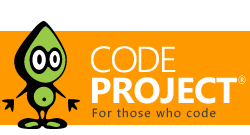//Copyright (c) Microsoft Corporation. All rights reserved.
using System;
using System.Collections.Generic;
namespace Microsoft.WindowsAPICodePack.Taskbar
{
internal class ProgressBarStateSettings
{
internal readonly int DefaultMaxValue = 100;
internal readonly int DefaultMinValue = 0;
/// <summary>
/// Represents a collection of name/value pairs for each HWND and it’s
/// current progress bar value.
/// </summary>
internal IDictionary<IntPtr, int> CurrentValues;
/// <summary>
/// Represents a collection of name/value pairs for each HWND and it’s
/// current progress bar max values
/// </summary>
internal IDictionary<IntPtr, int> MaxValues;
/// <summary>
/// Represents a collection of name/value pairs for each HWND and it’s
/// current progress bar state.
/// </summary>
internal IDictionary<IntPtr, TaskbarProgressBarState> States;
internal ProgressBarStateSettings()
{
CurrentValues = new Dictionary<IntPtr, int>();
MaxValues = new Dictionary<IntPtr, int>();
States = new Dictionary<IntPtr, TaskbarProgressBarState>();
}
private static ProgressBarStateSettings instance;
/// <summary>
/// Returns a singleton instance of the ProgressBarStateSettings class
/// </summary>
internal static ProgressBarStateSettings Instance
{
get
{
if (instance == null)
instance = new ProgressBarStateSettings();
return instance;
}
}
/// <summary>
/// Represents the HWND for the application or default window.
/// </summary>
internal IntPtr DefaultHandle
{
get
{
return TaskbarManager.Instance.OwnerHandle;
}
}
/// <summary>
/// Refreshes the native taskbar with the current progressbar values for the given HWND
/// </summary>
/// <param name="hwnd">Current window handle</param>
/// <param name="currentValue">Current progress bar value</param>
/// <param name="maxValue">Current progress bar max value</param>
internal void RefreshValue(IntPtr hwnd, int currentValue, int maxValue)
{
TaskbarManager.Instance.TaskbarList.SetProgressValue(hwnd, (ulong)currentValue, (ulong)maxValue);
}
/// <summary>
/// Refreshes the native taskbar with the current progressbar state for the given HWND
/// </summary>
/// <param name="hwnd">Current window handle</param>
/// <param name="state">Current progress bar state</param>
internal void RefreshState(IntPtr hwnd, TaskbarProgressBarState state)
{
TaskbarManager.Instance.TaskbarList.SetProgressState(hwnd, (TBPFLAG)state);
}
}
}




